In April of 2013, our Contributor Mark Mallett wrote an open letter to Pope Francis as a kind of “report” back to Rome, since John Paul II had asked the youth in 2002 to become…
…watchmen who proclaim to the world a new dawn of hope, brotherhood and peace. —POPE JOHN PAUL II, Address to the Guanelli Youth Movement, April 20th, 2002, www.vatican.va
Dear young people, it is up to you to be the watchmen of the morning who announce the coming of the sun who is the Risen Christ! —POPE JOHN PAUL II, Message of the Holy Father to the Youth of the World, XVII World Youth Day, n. 3; (cf. Is 21:11-12)
Drawing upon the Scriptures, Early Church Fathers, the Catechism of the Catholic Church, the popes, and last, an overwhelming confirmation in approved “private revelation” from around the world, Mark reiterated the “hope” that 2000 years of Christianity has anticipated, and that could be summarized in the words: the “Triumph of the Immaculate Heart.” This, said Benedict XVI…
…is equivalent in meaning to our praying for the coming of God’s Kingdom… So you could say the triumph of God, the triumph of Mary, are quiet, they are real nonetheless… —Light of the World, p. 166, A Conversation With Peter Seewald
Benedict was not referring to the end of the world but an interim coming of Christ in the Church, which is what St. John foretold in Revelation 20:4-6, the Early Church Fathers expounded upon, the popes announced in this past century, and now private revelation, such as here on Countdown to the Kingdom, is preparing us for.
Whereas people had previously spoken only of a twofold coming of Christ—once in Bethlehem and again at the end of time—Saint Bernard of Clairvaux spoke of an adventus medius, an intermediate coming, thanks to which he periodically renews His intervention in history. I believe that Bernard’s distinction strikes just the right note… —POPE BENEDICT XVI, Light of the World, p.182-183, A Conversation With Peter Seewald
Hence,
Why not ask [Christ] to send us new witnesses of his presence today, in whom he himself will come to us? And this prayer, while it is not directly focused on the end of the world, is nevertheless a real prayer for his coming; it contains the full breadth of the prayer that he himself taught us: “Your kingdom come!” Come, Lord Jesus! —POPE BENEDICT XVI, Jesus of Nazareth, Holy Week: From the Entrance into Jerusalem to the Resurrection, p. 292, Ignatius Press
This coming of the Kingdom is simply the fulfillment of the “Our Father”, when His Kingdom will come and “will be done on earth as it is in heaven.” This is not a coming of Christ to dwell on earth in the flesh, but precisely what Benedict XVI said: a coming of Christ within His Bride that is a coming of His Kingdom.
…the Kingdom of God means Christ himself, whom we daily desire to come, and whose coming we wish to be manifested quickly to us. For as he is our resurrection, since in him we rise, so he can also be understood as the Kingdom of God, for in him we shall reign. —Catechism of the Catholic Church, n. 2816
This, said saints such as Louis de Montfort and John Paul II, will produce a new holiness within the Church—the final stage of her preparation to become a Bride “without spot or wrinkle or any such thing, that she might be holy and without blemish” (Eph 5:27) in order to prepare her for the coming of the Bridegroom at the end of time.
God himself had provided to bring about that “new and divine” holiness with which the Holy Spirit wishes to enrich Christians at the dawn of the third millennium, in order to “make Christ the heart of the world.” —POPE JOHN PAUL II, Address to the Rogationist Fathers, n. 6, www.vatican.va
It is an interior coming of Christ within His Bride who, herself, becomes the dawn:
The Church, which comprises the elect, is fittingly styled daybreak or dawn… It will be fully day for her when she shines with the perfect brilliance of interior light. —St. Gregory the Great, Pope; Liturgy of the Hours, Vol III, p. 308
This, again, is affirmed in the magisterial teaching of the Church:
It would not be inconsistent with the truth to understand the words, “Thy will be done on earth as it is in heaven,” to mean: “in the Church as in our Lord Jesus Christ himself”; or “in the Bride who has been betrothed, just as in the Bridegroom who has accomplished the will of the Father.” —Catechism of the Catholic Church, n. 2827
But when?
After purification through trial and suffering, the dawn of a new era is about to break.—POPE ST. JOHN PAUL II, General Audience, September 10, 2003
Heresy?
Now, there are some who suggest that interpreting this “Era of Peace” as being the same event as Rev 20:4-6 is a heresy. (Note: as you’ll see in the quotes at the bottom, the Early Church Fathers foresaw this Era of Peace after the death of the Antichrist or “beast.” That leaves Rev 20:4-6 as the obvious “times of the kingdom”, ie. of the indwelling “new and divine holiness.” See Antichrist… Before the Era of Peace?).
…I saw the souls of those who had been beheaded for their testimony to Jesus and for the word of God, and who had not worshiped the beast or its image and had not received its mark on their foreheads or their hands. They came to life, and reigned with Christ a thousand years. The rest of the dead did not come to life until the thousand years were ended. This is the first resurrection. Blessed and holy is he who shares in the first resurrection! Over such the second death has no power, but they shall be priests of God and of Christ, and they shall reign with him a thousand years. (Rev 20:4-6)
Indeed, in the early Church, there were some who expected Christ to literally return to earth to depose His enemies, establish a political kingdom, and reign for a literal “thousand years.” But the Church condemned this as a heresy, and any future reiterations of this heresy, that would expect a definitive fulfillment of the Kingdom in the temporal realm. The Catechism of the Catholic Church states:
The Antichrist’s deception already begins to take shape in the world every time the claim is made to realize within history that messianic hope which can only be realized beyond history through the eschatological judgment. The Church has rejected even modified forms of this falsification of the kingdom to come under the name of millenarianism,(577) especially the “intrinsically perverse” political form of a secular messianism.(578) —CCC, n. 676
We deliberately left in the footnote references above because they are crucial in helping us understand what is meant by “millenarianism”, and secondly, “secular messianism” in the Catechism.
Footnote 577 is a reference to Denzinger-Schonnmetzer’s work (Enchiridion Symbolorum, definitionum et declarationum de rebus fidei et morum). Denzinger’s work traces the development of doctrine and Dogma in the Catholic Church from its earliest times, and is obviously seen as a credible enough source for the Catechism to quote. The footnote to “millenarianism” leads us to Denzinger’s work, which states:
…the system of mitigated Millenarianism, which teaches, for example, that Christ the Lord before the final judgment, whether or not preceded by the resurrection of the many just, will come visibly to rule over this world. The answer is: The system of mitigated Millenarianism cannot be taught safely. —DS 2269/3839, Decree of the Holy Office, July 21, 1944
Millenarianism, writes Leo J. Trese in The Faith Explained, pertains to those who take Revelation 20:6 literally.
St. John, describing a prophetic vision (Rev 20:1-6), says that the devil will be bound and imprisoned for a thousand years, during which the dead will come to life and reign with Christ; at the end of the thousand years the devil will be released and finally vanquished forever, and then will come the second resurrection… Those who do take this passage literally and believe that Jesus will come to reign upon earth for a thousand years before the end of the world are called millenarists. —p. 153-154, Sinag-Tala Publishers, Inc. (with the Nihil Obstat and Imprimatur)
Renowned Catholic theologian, Cardinal Jean Daniélou, also explains that:
Millenarianism, the belief that there will be an earthly reign of the Messiah before the end of time, is the Jewish-Christian doctrine which has aroused and continues to arouse more argument than any other. —A History of Early Christian Doctrine, p. 377 (as cited in The Splendor of Creation, p. 198-199, Rev. Joseph Iannuzzi)
He adds, “The reason for this, however, is probably a failure to distinguish between the various elements of doctrine” —which is what we are doing here. So in summary, Millenarianism in its root form was the belief that Jesus would return in the flesh to earth and reign for a literal thousand years before the end of time, an error initiated primarily by the first Jewish converts. There came from this heresy several offshoots such as the “carnal millenarians” whom St. Augustine identified as those who believe that…
…those who then rise again shall enjoy the leisure of immoderate carnal banquets, furnished with an amount of meat and drink such as not only to shock the feeling of the temperate, but even to surpass the measure of credulity…. They who believe them are called by the spiritual Chiliasts, which we may reproduce by the name of Millenarians…” —from De Civitate Dei, Book 10, Ch. 7
From this form of Millenarianism came the offshoots of modified, mitigated and spiritual Millenarianism under various sects whereby the carnal indulgences were excluded and yet some form of Christ returning to earth to reign and establish a definitive kingdom was still held. In all these forms, the Church has explicitly, once and for all, defined that this “system of mitigated Millenarianism cannot be taught safely.” The return of Jesus in glory and definitive establishment of the Kingdom will only occur at the end of time.
On Judgment Day at the end of the world, Christ will come in glory to achieve the definitive triumph of good over evil which, like the wheat and the tares, have grown up together in the course of history. —Catechism of the Catholic Church, n. 681
Finally, footnote 578 brings us to the document Divini Redemptoris, Pope Pius XI’s Encyclical against Atheistic Communism. While the millenarians held to some form of a utopian earthly-spiritual kingdom, secular messianists hold to a utopian political kingdom.
The Communism of today, more emphatically than similar movements in the past, conceals in itself a false messianic idea. —POPE PIUS XI, Divini Redemptoris, n. 8, www.vatican.va
What the Era is Not
To be certain, neither Mark Mallett nor the contributors of this website propose an Era of Peace that is a utopia whereby evil or free will no longer exists. Clearly, at the end of time, Satan is unbound from the abyss to successfully tempt the nations to revolt one last time against, what is now, the “camp of the saints” (Rev 20:9). Thus, even though sanctity will reach its heights in the Era of Peace, John Paul II warned that this is not an opportunity “to indulge in a new millenarianism”…
… with the temptation to predict substantial changes in it in the life of society as a whole and of every individual. Human life will continue, people will continue to learn about successes and failures, moments of glory and stages of decay, and Christ our Lord always will, until the end of time, be the only source of salvation. —POPE JOHN PAUL II, National Conference of Bishops, January 29th, 1996; www.vatican.va
Rather, this “period of peace” is just that; a period, a respite, and a rest for the Church.
St. Augustine clarified that, were it not for the Chiliasts’ beliefs attached to the millenium, that a period of peace or “sabbath rest” is indeed a valid interpretation of Revelation 20. This is what the Church Fathers taught and was confirmed again by a Theological Commission in 1952. [1]Inasmuch as the cited work bears the Church’s seals of approval, i.e., the imprimatur and the nihil obstat, it is an exercise of the Magisterium. When an individual bishop grants the Church’s official imprimatur, and neither the Pope nor the body of bishops oppose the conferral of this seal, it is an exercise of the ordinary Magisterium.
…as if it were a fit thing that the saints should thus enjoy a kind of Sabbath-rest during that period [of a “thousand years”], a holy leisure after the labors of six thousand years since man was created… [and] there should follow on the completion of six thousand years, as of six days, a kind of seventh-day Sabbath in the succeeding thousand years… And this opinion would not be objectionable, if it were believed that the joys of the saints, in that Sabbath, shall be spiritual, and consequent on the presence of God… —St. Augustine of Hippo (354-430 A.D.; Church Doctor), De Civitate Dei, Bk. XX, Ch. 7, Catholic University of America Presss
Such an occurrence is not excluded, is not impossible, it is not all certain that there will not be a prolonged period of triumphant Christianity before the end… If before that final end there is to be a period, more or less prolonged, of triumphant sanctity, such a result will be brought about not by the apparition of the person of Christ in Majesty but by the operation of those powers of sanctification which are now at work, the Holy Ghost and the Sacraments of the Church. —The Teaching of the Catholic Church: A Summary of Catholic Doctrine, London Burns Oates & Washbourne, p. 1140, from the Theological Commission of 1952, which is a Magisterial document.
Again, Revelation 20 therefore should not be interpreted as a literal return of Christ in the flesh for a literal thousand years, but as Benedict suggested, a “real” coming of Christ within the Church.
…millenarianism is that thought which stems from a too literal, incorrect, and faulty interpretation of Chapter 20 of the Book of Revelation…. This can only be understood in a spiritual sense. —Catholic Encyclopedia Revised, Thomas Nelson, p. 387
It is precisely this definition of an “era of peace” that the Church has nowhere condemned in any document, and in fact, has affirmed that it is a certain possibility.
Yes, a miracle was promised at Fatima, the greatest miracle in the history of the world, second only to the Resurrection. And that miracle will be an era of peace which has never really been granted before to the world. —Mario Luigi Cardinal Ciappi, October 9th, 1994; he also gave his stamp of approval in a separate letter officially recognizing the Family Catechism “as a sure source for authentic Catholic doctrine” (Sept. 9th, 1993); p. 35
Think of the heresy of Millenarianism as an olive tree and mitigated or modified Millenarianism as a pruned olive tree. The “era of peace” is actually a different tree all together. The problem is that these trees have grown side by side throughout the centuries, and poor theology, bad scholarship, and faulty assumptions [2]see How the Era was Lost have assumed that the branches crossing over from one tree to the other are actually the same tree. The crossover point shares only one thing in common: Rev 20:6. Otherwise, they are different trees altogether as much as the Protestant interpretation of the Eucharist is different from Catholic Tradition.
Thus, it is the spiritual reign of the Kingdom of God in the Church extending over the whole world, subsequent upon the power of the Holy Spirit and the Sacraments.
The Catholic Church, which is the kingdom of Christ on earth, [is] destined to be spread among all men and all nations… —POPE PIUS XI, Quas Primas, Encyclical, n. 12, Dec. 11th, 1925; cf. Matt 24:14
As mentioned, the Theological Commission in 1952 that produced The Teachings of the Catholic Church: A Summary of Catholic Doctrine affirmed that an Era of Peace ‘is not impossible, it is not all certain that there will not be a prolonged period of triumphant Christianity before the end.’ This open position was later confirmed by the Congregation for the Doctrine of the Faith. Padre Martino Penasa spoke to Msgr. S. Garofalo (Consultant to the Congregation for the Cause of Saints) on the scriptural foundation [Rev 20:4-6] of an historic and universal era of peace, as opposed to millenarianism. Msgr. suggested that the matter be posed directly to the Congregation for the Doctrine of the Faith. Fr. Martino thus posed the question: “È imminente una nuova era di vita cristiana?” (“Is a new era of Christian life imminent?”). The Prefect at that time, Cardinal Joseph Ratzinger replied, “La questione è ancora aperta alla libera discussione, giacchè la Santa Sede non si è ancora pronunciata in modo definitivo”:
The question is still open to free discussion, as the Holy See has not made any definitive pronouncement in this regard. —Il Segno del Soprannauturale, Udine, Italia, n. 30, p. 10, Ott. 1990; Fr. Martino Penasa presented this question of a “millenary reign” to Cardinal Ratzinger
How Long?
People have asked if the “thousand year” era of peace is a literal thousand years or not. The Church Fathers were clear on this:
Now… we understand that a period of one thousand years is indicated in symbolic language. —St. Justin Martyr, Dialogue with Trypho, Ch. 81, The Fathers of the Church, Christian Heritage
Cardinal Jean Daniélou, expounding upon the Scriptural references of an era of peace, stated:
It implies a period of time, the duration of which is unknown to men… The essential affirmation is of an intermediate stage in which the risen saints are still on earth and have not yet entered their final stage, for this is one of the aspects of the mystery of the last days which has yet to be revealed.—A History of Early Christian Doctrine, p. 377-378 (as cited in The Splendor of Creation, p. 198-199, Rev. Joseph Iannuzzi
St. Thomas Aquinas explained:
As Augustine says, the last age of the world corresponds to the last stage of a man’s life, which does not last for a fixed number of years as the other stages do, but lasts sometimes as long as the others together, and even longer. Wherefore the last age of the world cannot be assigned a fixed number of years or generations. —St. Thomas Aquinas, Quaestiones Disputate, Vol. II De Potentia, Q. 5, n.5; www.dhspriory.org
Thus, the “thousand years” should be understood symbolically. What is certain is that the “period of peace” prophesied by Our Lady, the “new age” spoken of by Pope Benedict, and the “third millenium” of unity anticipated by John Paul II are not to be understood as some kind of utopia on earth whereby sin and death are forever vanquished (or that Christ reigns on earth in His risen flesh!). Rather, they are to be understood as the fulfillment of Our Lord’s commission to bring the Gospel to the ends of the earth(cf. Matt 24:14; Isa 11:9) and the preparation of the Church to receive Him in glory. The ecclesiastically approved mystics of the 20th century and recent popes tell us that it will be a period of unparalleled sanctity in the Church and a triumph of God’s mercy in the world:
The Unanimous Voice of the Church
The most authoritative view, and the one that appears to be most in harmony with Holy Scripture, is that, after the fall of the Antichrist, the Catholic Church will once again enter upon a period of prosperity and triumph. —Fr. Charles Arminjon (1824-1885), The End of the Present World and the Mysteries of the Future Life, p. 56-57; Sophia Institute Press
But when The Antichrist shall have devastated all things in this world, he will reign for three years and six months, and sit in the temple at Jerusalem; and then the Lord will come from Heaven in the clouds… sending this man and those who follow him into the lake of fire; but bringing in for the righteous the times of the kingdom, that is, the rest, the hallowed seventh day… These are to take place in the times of the kingdom, that is, upon the seventh day… the true Sabbath of the righteous. —St. Irenaeus of Lyons, Church Father (140–202 A.D.); Adversus Haereses, Irenaeus of Lyons, V.33.3.4, The Fathers of the Church, CIMA Publishing Co.
…the efforts of Satan and of evil men are shattered and come to naught. In spite of Satan’s anger, the Divine Mercy will triumph over the whole world and will be worshiped by all souls. —Divine Mercy in My Soul, Diary of St. Faustina, n. 1789
The time has come to exalt the Holy Spirit in the world… I desire that this last epoch be consecrated in a very special way to this Holy Spirit…It is his turn, it is his epoch, it is the triumph of love in My Church, in the whole universe.—Jesus to Venerable María Concepción Cabrera de Armida; Fr. Marie-Michel Philipon, Conchita: A Mother’s Spiritual Diary, p. 195-196
I am coming! I am at the door! My love has planned this action before the creation of the world… The world lies in dense darkness. This generation would deserve to be wiped out; but I wish to show Myself merciful… I am coming Myself and I will manifest My will… The things that will come shall surpass by far what happened. The Mother of God, My mother, and the Angels will take part in it. Hell by now believes itself certain of victory, but I will take it away… I am coming, and with Me, peace shall come. I will build my Kingdom with a small number of elect. This Kingdom will come suddenly, sooner than what one thinks. I will make My light shine, which to some will be blessing and to others darkness. Humanity will recognize My love and My power. —approved apparitions at Heede, Germany, 1945; cf. “Heede – I am coming! I am at the door!”
…it will be men themselves who will provoke the imminent conflict, and it will be I Myself who will destroy the forces of evil to draw good from all this, and it will be the Mother, most holy Mary, who will crush the head of the serpent, thus beginning a new era of peace; IT WILL BE THE ADVENT OF MY KINGDOM UPON EARTH. It will be the return of the Holy Ghost for a new Pentecost. It will be my merciful love that will defeat Satan’s hatred. It will be truth and justice that will prevail over heresy and over injustice; it will be the light that will put to flight the darkness of hell. —Jesus to Fr. Ottavio Michelini, priest, mystic, and member of the Papal Court of Pope St. Paul VI (one of the highest honors bestowed by a Pope on a living person); December 9, 1976
You see that this world cannot continue to exist in such a state. The concentration of evil has grown to its final limits everywhere. The kingdom of Satan is reaching its peak. A time of purification is coming: the birthpangs of life in My kingdom of love… Afterwards there will simply be the pain of purification and change, and this will be salvific. For then the glory of My victory over the world will shine, and My open arms will await My children. Do not be afraid of this moment. The final attack of evil will be the moment of My coming… The time of the fullness of your unity in and with Me is beginning. Rejoice, await the coming of the Bridegroom, for behold, the time for the wedding of the Lamb is coming. A time of celebration, light and consolation… My light within you is the dawning of a new era of pure love – the era of the kingdom of love. Be courageous and faithful to your calling. —dialogue of Our Lord with Alicja Lenczewska , November 30, 1987, (Testimony, n° 753). Alicja’s two-volume spiritual journal (Testimony (1985-1989) and Exhortations (1989-2010) was published posthumously, thanks to the efforts of the Archbishop of Szczecin, Andrzej Dzięga, who established a theological commission for the evaluation of her writings, which were granted the Imprimatur by Bishop Henryk Wejman.
My daughter, in My Resurrection, souls received the rightful claims to rise again in Me to new life. It was the confirmation and seal of My entire life, of My works and of My words. If I came to earth it was to enable each and every soul to possess My Resurrection as their own—to give them life and make them resurrect in My own Resurrection. And do you wish to know when the real resurrection of the soul occurs? Not in the end of days, but while it is still alive on earth. One who lives in My Will resurrects to the light and says: ‘My night is over.’ Such a soul rises again in the love of its Creator and no longer experiences cold of winter, but enjoys the smile of My heavenly spring. Such a soul rises again to holiness, which hastily disperses all weakness, misery and passions; it rises again to all that is heavenly. —Jesus to Luisa Piccarreta , April 20th, 1938
But even this night in the world shows clear signs of a dawn that will come, of a new day receiving the kiss of a new and more resplendent sun… A new resurrection of Jesus is necessary: a true resurrection, which admits no more lordship of death… In individuals, Christ must destroy the night of mortal sin with the dawn of grace regained. In families, the night of indifference and coolness must give way to the sun of love. In factories, in cities, in nations, in lands of misunderstanding and hatred the night must grow bright as the day, nox sicut dies illuminabitur, and strife will cease and there will be peace. —POPE PIUX XII, Urbi et Orbi address,March 2nd, 1957; vatican.va
Ah, my daughter, the creature always races more into evil. How many machinations of ruin they are preparing! They will go so far as to exhaust themselves in evil. But while they occupy themselves in going their way, I will occupy Myself with the completion and fulfillment of My Fiat Voluntas Tua (“Thy will be done”) so that My Will reign on earth—but in an all-new manner. Ah yes, I want to confound man in Love! Therefore, be attentive. I want you with Me to prepare this Era of Celestial and Divine Love…—Jesus to Servant of God, Luisa Piccarreta, Feb 8th, 1921
“And they shall hear my voice, and there shall be one fold and one shepherd.” May God… shortly bring to fulfillment His prophecy for transforming this consoling vision of the future into a present reality… It is God’s task to bring about this happy hour and to make it known to all… When it does arrive, it will turn out to be a solemn hour, one big with consequences not only for the restoration of the Kingdom of Christ, but for the pacification of… the world. We pray most fervently, and ask others likewise to pray for this much-desired pacification of society. —POPE PIUS XI, Ubi Arcani dei Consilioi “On the Peace of Christ in his Kingdom”, December 23, 1922
The task of humble Pope John is to “prepare for the Lord a perfect people,” which is exactly like the task of the Baptist, who is his patron and from whom he takes his name. And it is not possible to imagine a higher and more precious perfection than that of the triumph of Christian peace, which is peace at heart, peace in the social order, in life, in wellbeing, in mutual respect, and in the brotherhood of nations. —POPE ST. JOHN XXIII, True Christian Peace, December 23rd, 1959; www.catholicculture.org
Empowered by the Spirit, and drawing upon faith’s rich vision, a new generation of Christians is being called to help build a world in which God’s gift of life is welcomed, respected and cherished—not rejected, feared as a threat, and destroyed. A new age in which love is not greedy or self-seeking, but pure, faithful and genuinely free, open to others, respectful of their dignity, seeking their good, radiating joy and beauty. A new age in which hope liberates us from the shallowness, apathy, and self-absorption which deaden our souls and poison our relationships. Dear young friends, the Lord is asking you to be prophets of this new age… —POPE BENEDICT XVI, Homily, World Youth Day, Sydney, Australia, July 20th, 2008
God loves all men and women on earth and gives them the hope of a new era, an era of peace. His love, fully revealed in the Incarnate Son, is the foundation of universal peace… The Great Jubilee is inseparably linked to this message of love and reconciliation, a message which gives voice to the truest aspirations of humanity today. —POPE JOHN PAUL II, Message of Pope John Paul II for the Celebration of the World Day of Peace, January 1, 2000
Drawn from Mark Mallett’s writings at The Now Word:
Dear Holy Father… He is Coming!
Footnotes
| ↑1 | Inasmuch as the cited work bears the Church’s seals of approval, i.e., the imprimatur and the nihil obstat, it is an exercise of the Magisterium. When an individual bishop grants the Church’s official imprimatur, and neither the Pope nor the body of bishops oppose the conferral of this seal, it is an exercise of the ordinary Magisterium. |
|---|---|
| ↑2 | see How the Era was Lost |



 Alicja Lenczewska
Alicja Lenczewska

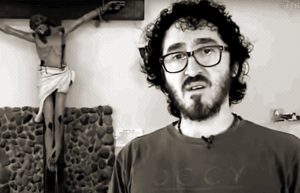
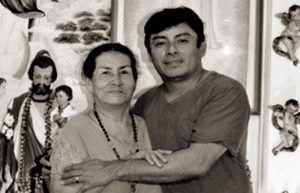
 Elizabeth Kindelmann
Elizabeth Kindelmann Through what became The Spiritual Diary, Jesus and Mary taught Elizabeth, and they continue to instruct the faithful in the divine art of suffering for the salvation of souls. Tasks are assigned for each day of the week, which involve prayer, fasting, and night vigils, with beautiful promises attached to them, laced with special graces for priests and the souls in purgatory. In their messages, Jesus and Mary say that The Flame of Love of the Immaculate Heart of Mary is the greatest grace given to mankind since the Incarnation. And in the not-so-distant future, her flame will engulf the entire world.
Through what became The Spiritual Diary, Jesus and Mary taught Elizabeth, and they continue to instruct the faithful in the divine art of suffering for the salvation of souls. Tasks are assigned for each day of the week, which involve prayer, fasting, and night vigils, with beautiful promises attached to them, laced with special graces for priests and the souls in purgatory. In their messages, Jesus and Mary say that The Flame of Love of the Immaculate Heart of Mary is the greatest grace given to mankind since the Incarnation. And in the not-so-distant future, her flame will engulf the entire world.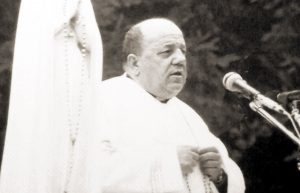 Father Stefano Gobbi
Father Stefano Gobbi Why Gisella Cardia?
Why Gisella Cardia? Thirdly, the messages have frequently been accompanied by visible phenomena, photographic evidence found in In Cammino con Maria, which cannot be the fruit of subjective imagination, notably the presence of the stigmata on Giselle’s body and and the appearance of crosses or religious texts in blood on Gisella’s arms. See the pictures taken from her apparition website
Thirdly, the messages have frequently been accompanied by visible phenomena, photographic evidence found in In Cammino con Maria, which cannot be the fruit of subjective imagination, notably the presence of the stigmata on Giselle’s body and and the appearance of crosses or religious texts in blood on Gisella’s arms. See the pictures taken from her apparition website 
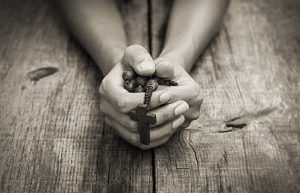 Jennifer
Jennifer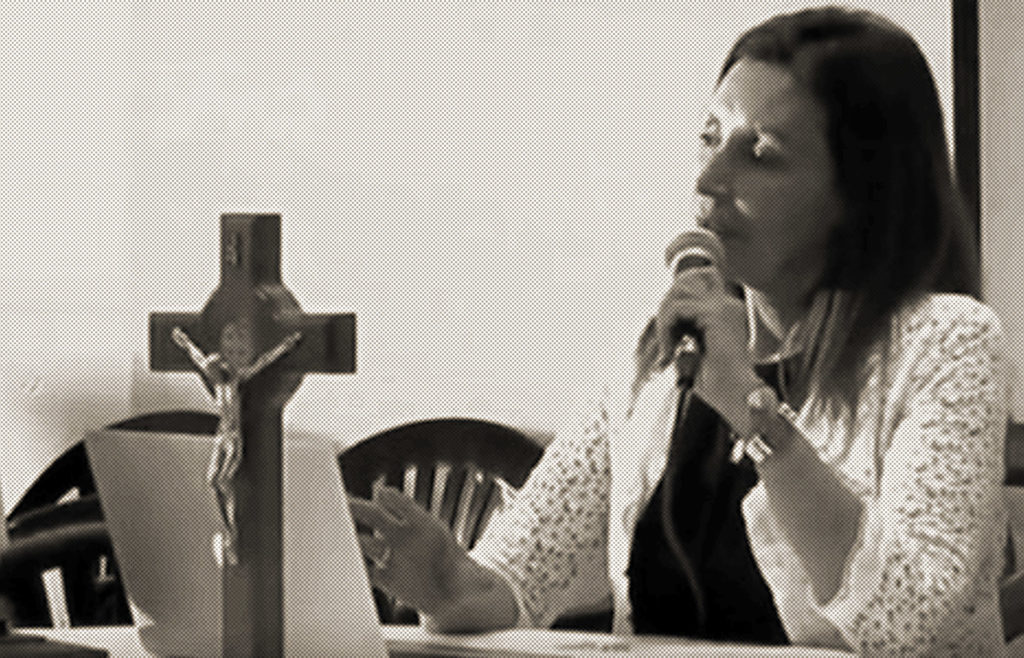
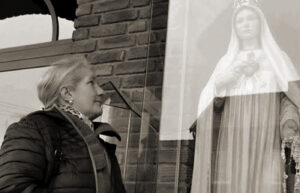 Why Manuela Strack?
Why Manuela Strack?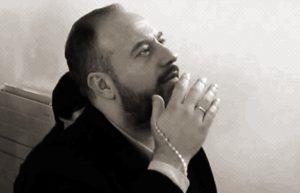

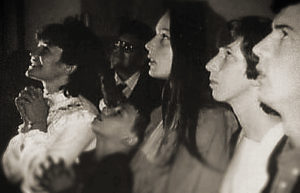 Why the Visionaries of Our Lady of Medjugorje?
Why the Visionaries of Our Lady of Medjugorje? Why Pedro Regis?
Why Pedro Regis? Why the Servant of God Luisa Piccarreta?
Why the Servant of God Luisa Piccarreta?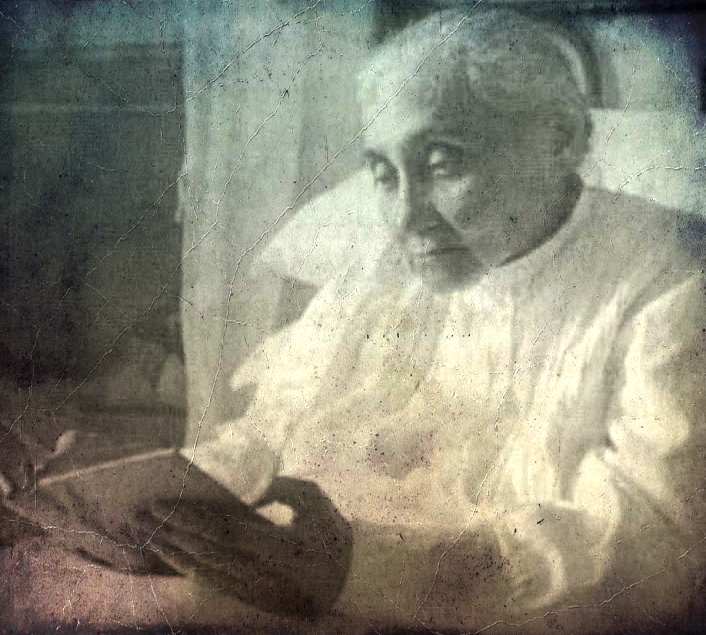 of the saints. It wasn’t until she became a “Daughter of Mary” that the nightmares finally ceased at the age of eleven. In the following year, Jesus began to speak interiorly to her especially after receiving Holy Communion. When she was thirteen, He appeared to her in a vision that she witnessed from the balcony of her home. There, in the street below, she saw a crowd and armed soldiers leading three prisoners; she recognized Jesus as one of them. When He arrived beneath her balcony, He raised his head and cried out: “Soul, help Me!” Deeply moved, Luisa offered herself from that day on as a victim soul in expiation for the sins of mankind.
of the saints. It wasn’t until she became a “Daughter of Mary” that the nightmares finally ceased at the age of eleven. In the following year, Jesus began to speak interiorly to her especially after receiving Holy Communion. When she was thirteen, He appeared to her in a vision that she witnessed from the balcony of her home. There, in the street below, she saw a crowd and armed soldiers leading three prisoners; she recognized Jesus as one of them. When He arrived beneath her balcony, He raised his head and cried out: “Soul, help Me!” Deeply moved, Luisa offered herself from that day on as a victim soul in expiation for the sins of mankind.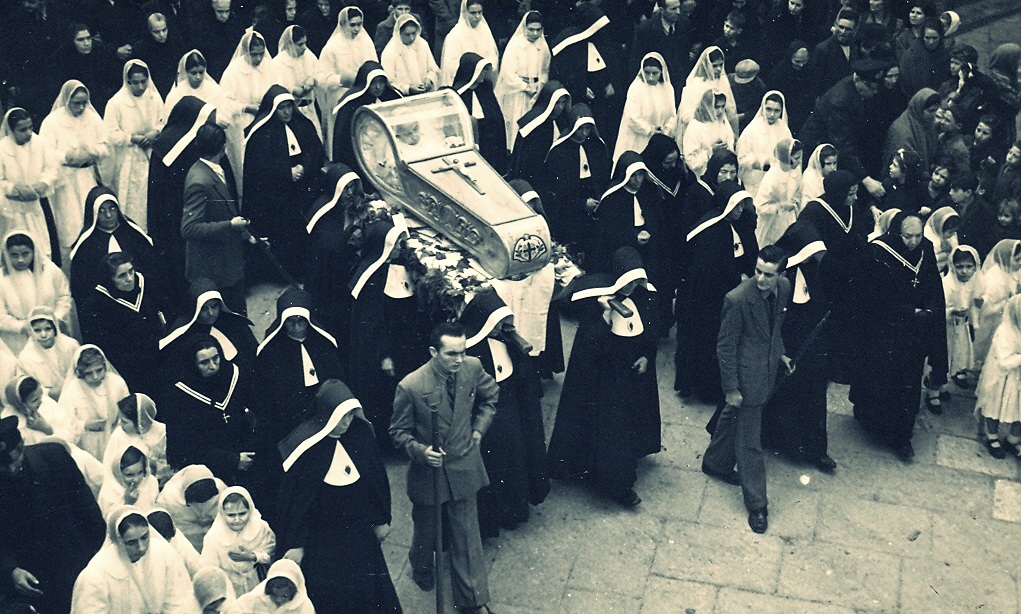 immobile, rigid-like state that appeared almost as if she were dead. It was only when a priest made the sign of the Cross over her body that Luisa regained her faculties. This remarkable mystical state persisted until her death in 1947—followed by a funeral that was no little affair. During that period in her life, she suffered no physical illness (until she succumbed to pneumonia at the end) and she never experienced bedsores, despite being confined to her little bed for sixty-four years.
immobile, rigid-like state that appeared almost as if she were dead. It was only when a priest made the sign of the Cross over her body that Luisa regained her faculties. This remarkable mystical state persisted until her death in 1947—followed by a funeral that was no little affair. During that period in her life, she suffered no physical illness (until she succumbed to pneumonia at the end) and she never experienced bedsores, despite being confined to her little bed for sixty-four years. Why Simona and Angela?
Why Simona and Angela?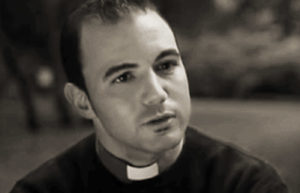
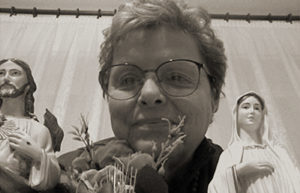 Valeria Copponi
Valeria Copponi